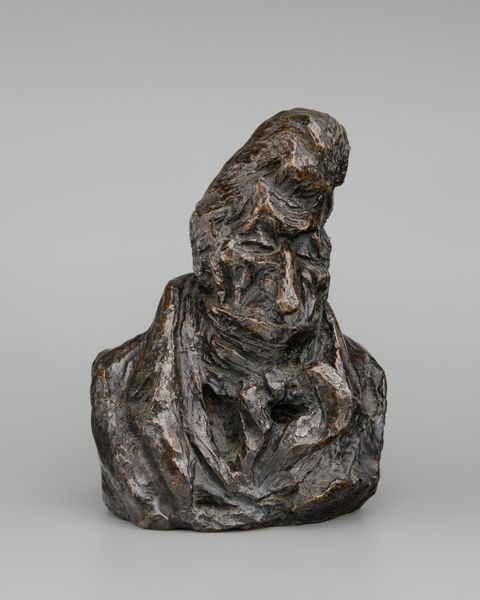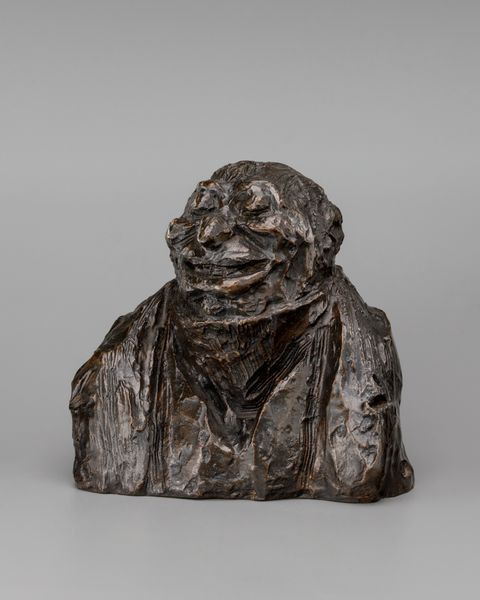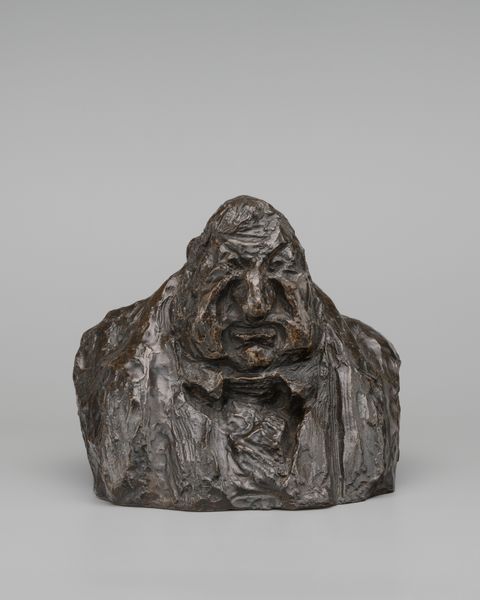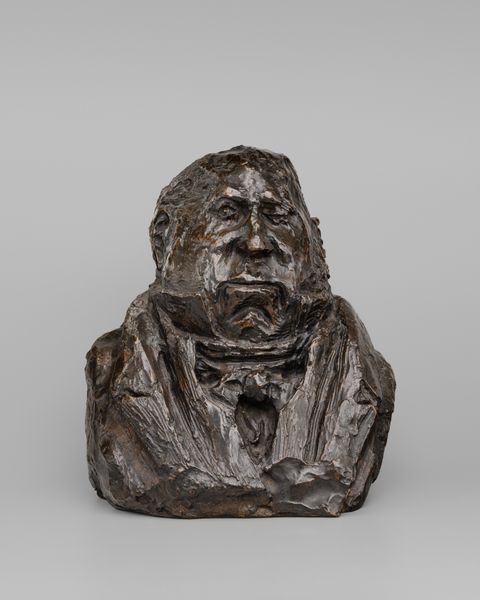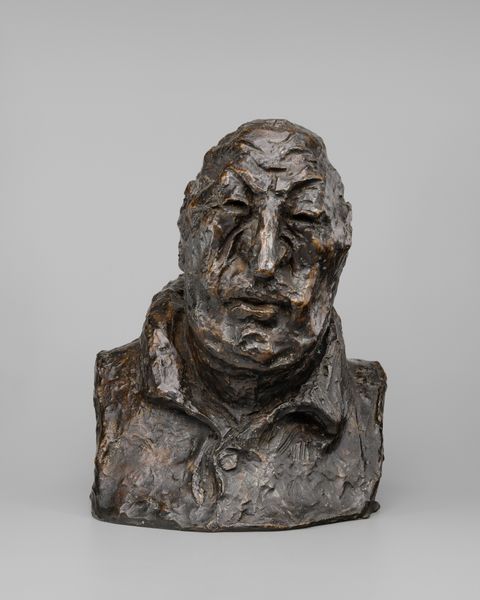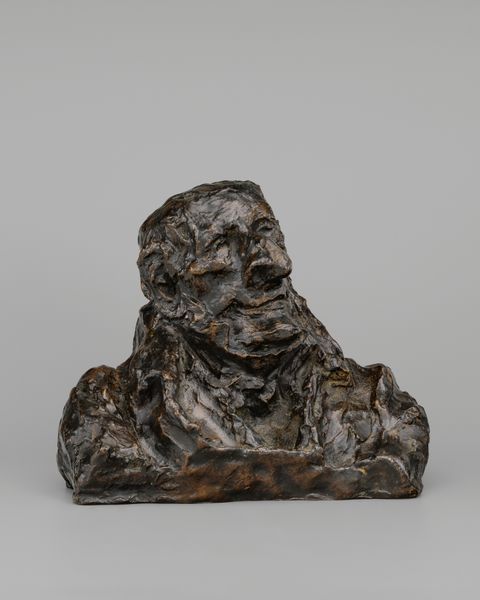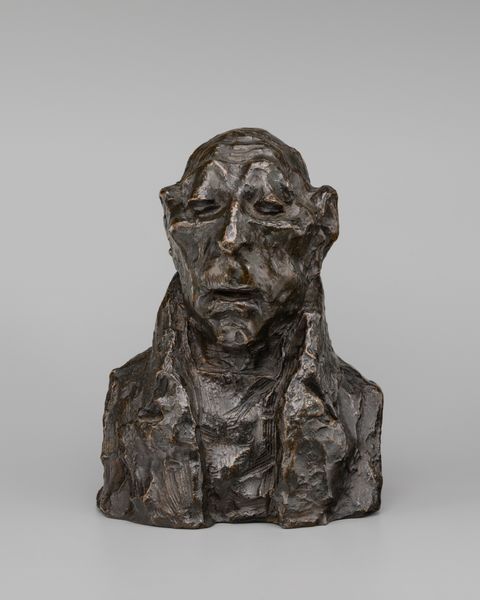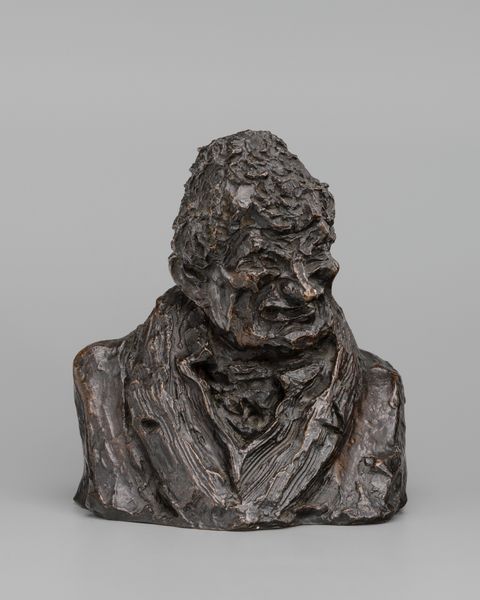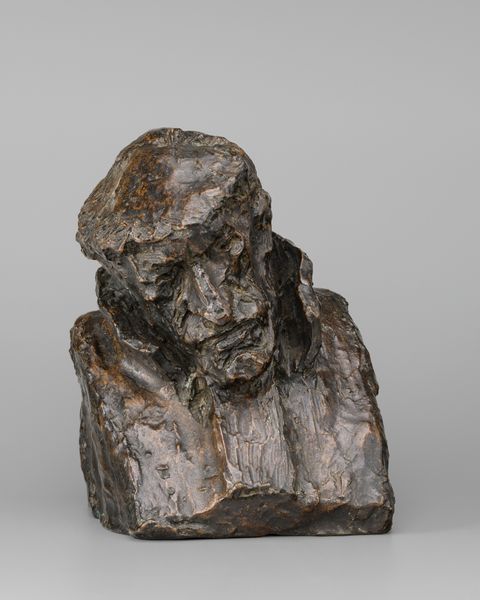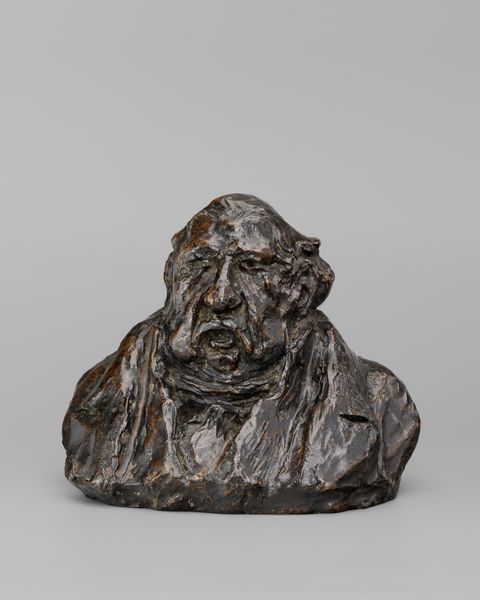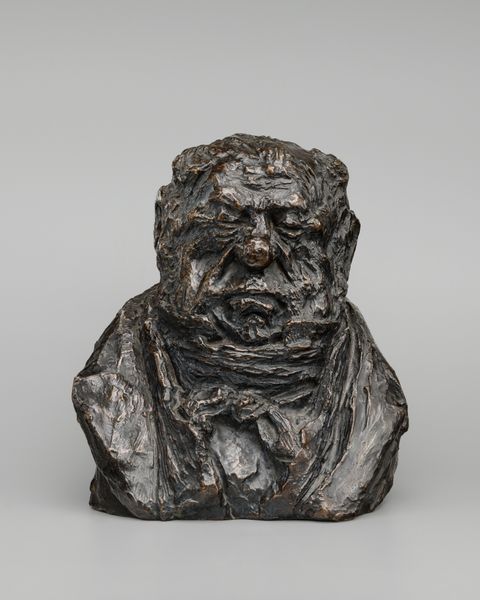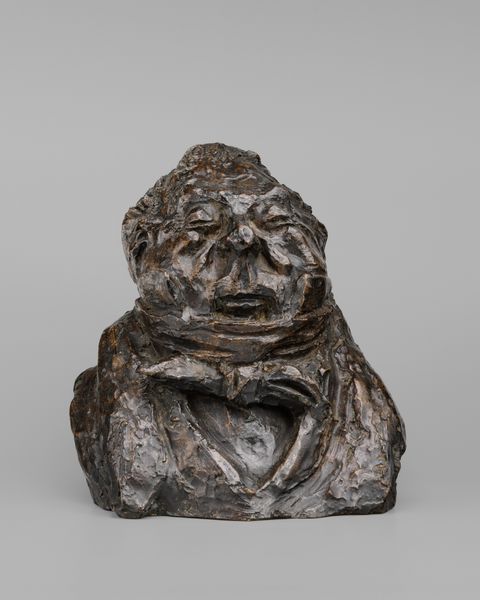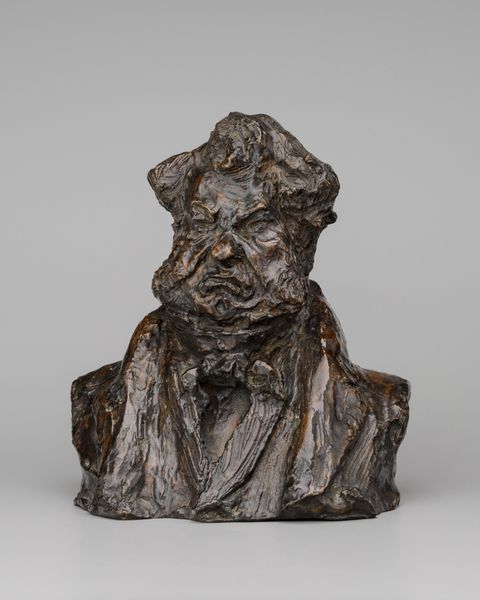
bronze, sculpture
#
portrait
#
bronze
#
sculpture
#
academic-art
#
realism
Dimensions: overall: 13 x 11.8 x 8.9 cm (5 1/8 x 4 5/8 x 3 1/2 in.)
Copyright: National Gallery of Art: CC0 1.0
Editor: This is Honoré Daumier's bronze sculpture, "Pierre-Paul Royer-Collard," made sometime between 1832 and 1835. It feels very weighty and serious, befitting its subject. What strikes you about this piece? Curator: Daumier, known for his social critique, captures Royer-Collard, a philosopher and politician, with incredible depth. It's not just a portrait; it's a statement on power and intellect in post-revolutionary France. Notice the downcast gaze and heavy brow. How do those features resonate within a society grappling with new political ideologies? Editor: They suggest contemplation, maybe even a weariness with the political climate. He doesn't seem triumphant, more… burdened. Curator: Exactly. Daumier subtly questions the nature of leadership. This sculpture enters a dialogue about the responsibilities and emotional toll of governance. In the wake of the Enlightenment, what were the shifting expectations placed on figures of authority, like Royer-Collard? Editor: So, the sculpture invites us to consider not only the individual, but also the sociopolitical landscape they inhabited. Was Daumier commenting on Royer-Collard specifically, or using him as a symbol? Curator: It's both, I think. The specificity of the features anchors him in reality, while the overall mood elevates him to a symbol of the intellectual and political class of that era, inviting critical engagement with their role. Consider how his portrayal either confirms or challenges pre-conceived assumptions on elite governance during the July Monarchy. Editor: That makes me rethink my initial impression. It's more complex than just "serious;" it's an invitation to analyze power. Curator: Precisely! Art as a catalyst for social and political examination. Editor: I appreciate how you've illuminated the work's connection to the larger sociopolitical climate of France at the time, it gives this bronze so much to consider. Curator: Indeed. It pushes us to see portraiture as more than just representation; as critical discourse.
Comments
No comments
Be the first to comment and join the conversation on the ultimate creative platform.
